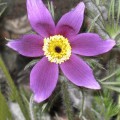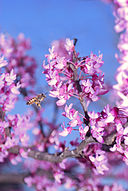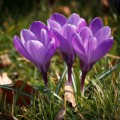- Geraniums: Two Floral Families with Striking Flowers - December 15, 2019
- Festive Flowers for a Dazzling Winter Bouquet or Centerpiece - December 14, 2019
- Forcing Flower Bulbs For the Holiday Season - December 13, 2019
Forsythia are beacons of springtime. When the branches and buds start to turn a brilliant shade of yellow, we know that warmer weather is right around the corner.
Forsythia is named for William Forsyth, a founder of the Royal Horticultural Society. It was first introduced to Europe in the late 1800s. These shrubs are only native to Asia but have been cultivated all around the world in the last one hundred years.
Forsythia is a relative of olive trees. All eleven varieties have mostly identical small yellow blooms. Variations are found in the leaves and growth patterns of the plant.
Because forsythia blooms in early to mid spring, it is often associated with Easter. In fact, one of its common names is the Easter Tree. It is also sometimes known as Golden Bell because of the shape of the individual blossoms.
Forsythia stems are one of earliest to bloom in spring. Victorians used the unspoken language of flowers to convey feelings. They associated forsythia with anticipation as they looked forward to the end of winter. Forsythia could be given to a loved one to convey anticipation of an upcoming meeting.
Forsythia is also representative of reliability. Branches and buds are known to begin turning yellow while there is still snow on the ground and a chill in the air. Because they are sturdy once established, forsythia can be counted on to brighten your late winter landscape.
Almost all forsythia flowers are golden or lemon yellow. This color is said to represent cheerfulness, friendship, and positive energy. The association of yellow flowers with happy sentiments makes it appropriate for Easter, spring birthdays, “get well”, or any celebratory occasion.
These cheery flowers are usually sold in bunches of long graceful branches. They are beautiful on their own or as the focal point of a bouquet. They also make a wonderful gift because they are so easy to grow. In fact, it is commonly said that you can just stick a forsythia branch in the ground and it will take root. When they are done blooming in the vase, they can easily be planted for enjoyment in years to come.
Branches of forsythia usually have both closed buds and open blooms. Flowers will continue to open once inside the house. This carries on the theme of anticipation as you look forward to more buds opening. In this way, forsythia is a beacon of springtime.





